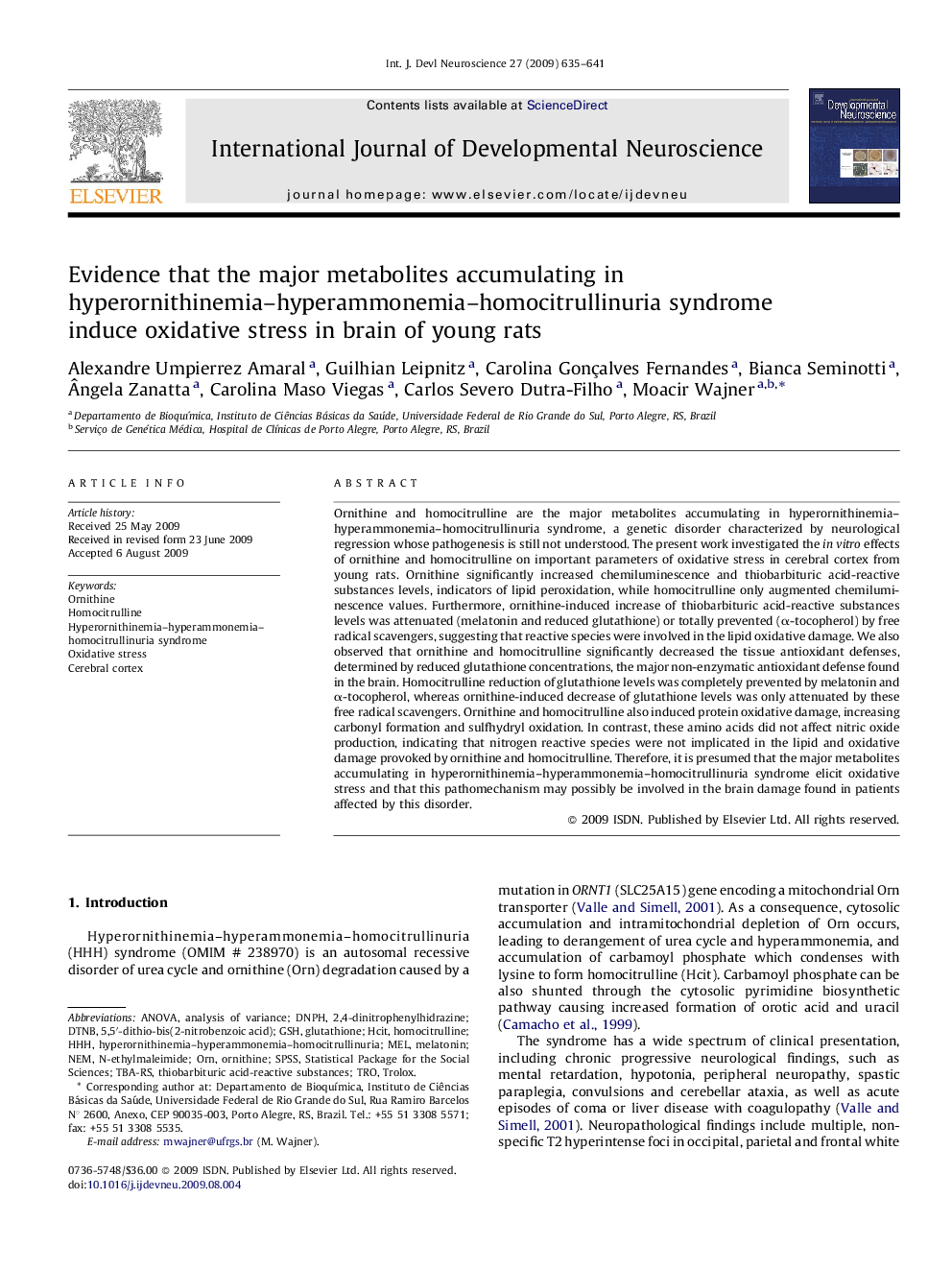| Article ID | Journal | Published Year | Pages | File Type |
|---|---|---|---|---|
| 2786245 | International Journal of Developmental Neuroscience | 2009 | 7 Pages |
Ornithine and homocitrulline are the major metabolites accumulating in hyperornithinemia–hyperammonemia–homocitrullinuria syndrome, a genetic disorder characterized by neurological regression whose pathogenesis is still not understood. The present work investigated the in vitro effects of ornithine and homocitrulline on important parameters of oxidative stress in cerebral cortex from young rats. Ornithine significantly increased chemiluminescence and thiobarbituric acid-reactive substances levels, indicators of lipid peroxidation, while homocitrulline only augmented chemiluminescence values. Furthermore, ornithine-induced increase of thiobarbituric acid-reactive substances levels was attenuated (melatonin and reduced glutathione) or totally prevented (α-tocopherol) by free radical scavengers, suggesting that reactive species were involved in the lipid oxidative damage. We also observed that ornithine and homocitrulline significantly decreased the tissue antioxidant defenses, determined by reduced glutathione concentrations, the major non-enzymatic antioxidant defense found in the brain. Homocitrulline reduction of glutathione levels was completely prevented by melatonin and α-tocopherol, whereas ornithine-induced decrease of glutathione levels was only attenuated by these free radical scavengers. Ornithine and homocitrulline also induced protein oxidative damage, increasing carbonyl formation and sulfhydryl oxidation. In contrast, these amino acids did not affect nitric oxide production, indicating that nitrogen reactive species were not implicated in the lipid and oxidative damage provoked by ornithine and homocitrulline. Therefore, it is presumed that the major metabolites accumulating in hyperornithinemia–hyperammonemia–homocitrullinuria syndrome elicit oxidative stress and that this pathomechanism may possibly be involved in the brain damage found in patients affected by this disorder.
